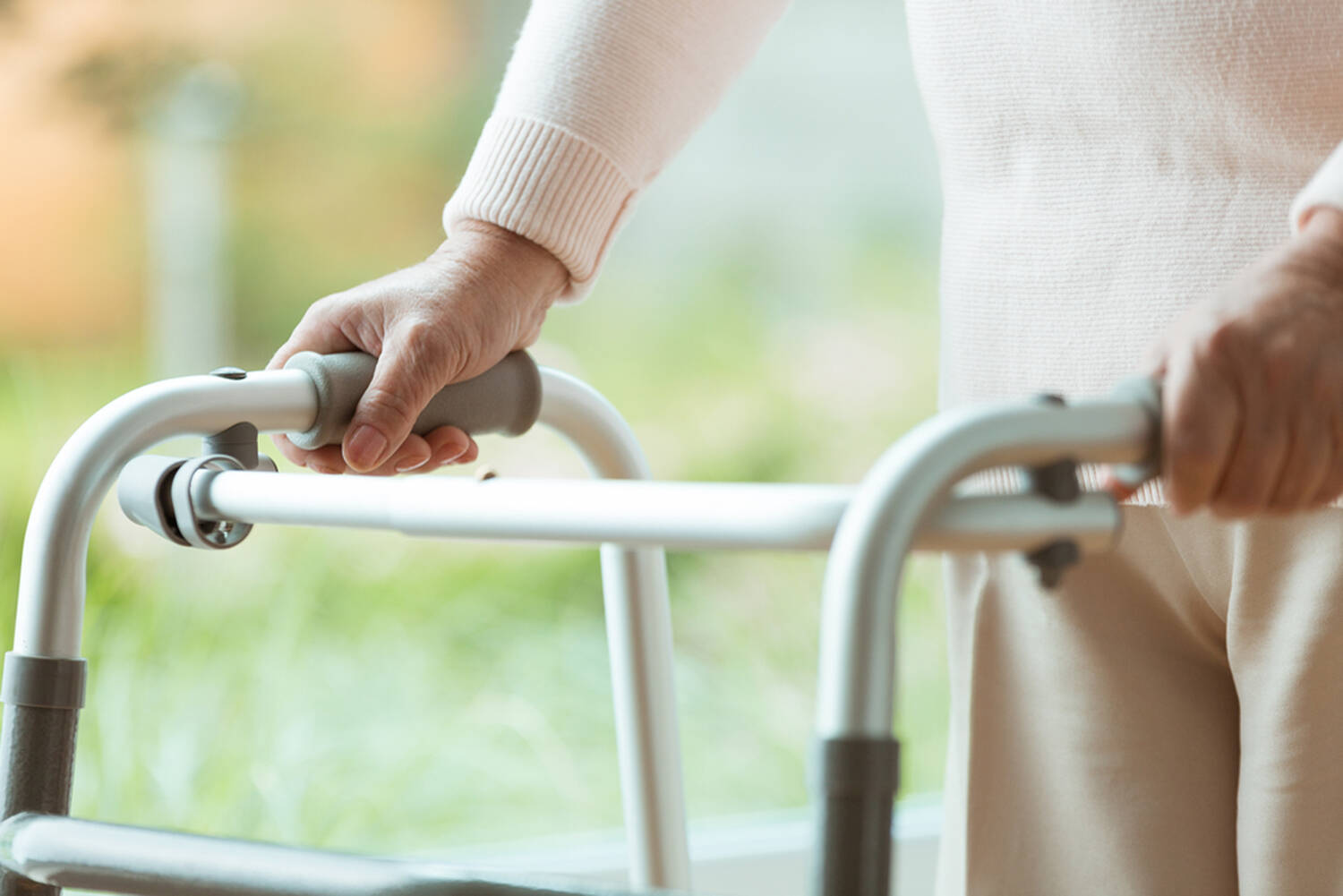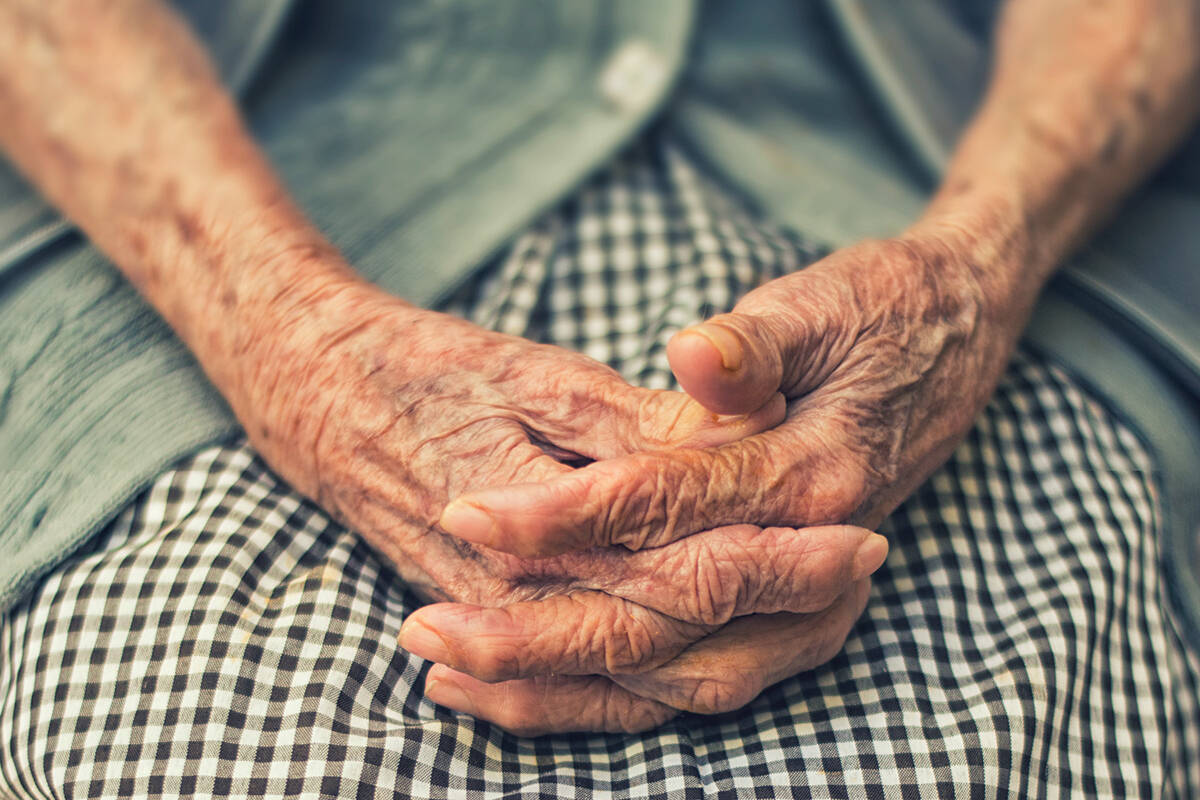It all started with a few forgotten items and confusion with directions.
On a familiar car trip, Harold turned the wrong way out of a rest area and continued for kilometres, convinced he was going the right way. At the hotel, he locked himself out of the room in the middle of the night.
Those early signs of dementia in her husband would continue to grow as Elizabeth spent the last bits of her physical and emotional health caring for a spouse that gradually turned into someone she no longer recognized.
(Elizabeth and Harold are not their actual names. Black Press has agreed to withhold their names so that members of the family cannot be identified.)
In her mid-70s, the Castlegar senior has health problems of her own, but she put them on the back burner as she struggled to do her best to care for Harold, her spouse of 21 years.
Before long, Harold was not paying attention to conversations. But Elizabeth was in denial about what was happening — making excuses, covering up behaviours and trying to compensate for his struggles by altering things around the house and in their lives.
She kept the problems to herself, not even sharing them with her children.
As Harold’s dementia continued to progress, Elizabeth gave up much of her social life, including playing golf, a pastime she was passionate about.
“I just put on a brave face,” said Elizabeth.
Harold demanded his food be prepared in precise ways and times. He became obsessed with the house temperature, turning up the heat to 30 degrees at every opportunity. He would pace the floor all night long.
He would leave the water taps running, flooding the bathroom and used the toilet as a garbage can, necessitating the need for continual repairs. He racked up bills in the hundreds to thousands of dollars in pay-per-view movies.
Eventually Harold began to lose control of his bladder and bowels and Elizabeth added daily laundry and bed changes to her list of chores. If the accidents happened in the car, she would have to clean that too.
Yet still Elizabeth trudged on as his sole caregiver.
Harold also became verbally abusive and Elizabeth would wake up to find him standing over her in the middle of the night. She moved out of her bedroom because Harold would unintentionally hit her in the night as he tossed about.
Elizabeth would still take him out to eat and drive him to appointments, but Harold would yell at her while she drove.
“It was really dangerous,” said Elizabeth, who at times would have to pull over and cry before she could continue on.
Elizabeth’s son began to notice that she had developed a tremor in her hands, but she claimed it was just from being over tired.
“She didn’t share these things with us,” said her son James, who is heartbroken over the hard times his mother has endured.
Meanwhile, Elizabeth says she was actually “shaking on the inside and the outside.”
It wasn’t until Elizabeth needed to travel for a medical appointment and James came to spend a night with his step dad that the family began to get a glimpse of what life was like at home for their mom.
“I didn’t share what was going on, because I thought it was my responsibility to care for him,” explained Elizabeth. “I couldn’t allow myself to think that I couldn’t take care of him because I felt like it was my responsibility, regardless of how my health was spiralling downhill.”
At times Harold was assisted by support workers who would check in on him, but they were there for Harold, not Elizabeth.
James says this is where there was a gap in available support services — there wasn’t anyone to care for the caregiver.
After seeing what his mom went through, James now encourages family members to take a closer look at how the seniors in their circle are really doing.
“Visits that are 30-to-60 minutes really don’t reveal the truth,” he says.
The family began to urge Elizabeth to place Harold into a care home. But it would take another year and a half before she would agree.
James feels strongly that more needs to be done to support the caregivers.
“Why are we missing the caregiver? Everyone is so concerned about the person who has broken their hip, or who has dementia, but the person that is caring for them needs help too,” said James.
“Harold was having all his needs met, but mom was crashing.”
Personally, he thinks his family could have benefited from workshops or classes regarding the warning signs of dementia and caring for those with the disease, and that those supports should be promoted and available locally.
Recognizing the problem
Castlegar senior’s advocate and Project IRIS co-ordinator Sandi McCreight says Elizabeth and Harold’s story is all too common.
A report released in December 2021 by B.C.’s seniors advocate Isobel Mackenzie found a 49-per-cent increase in abuse, neglect and self-neglect cases over the last three-to-five years across the province.
“The more we understand about elder abuse the better,” says McCreight.
McCreight says there is a lot of misunderstanding regarding the term elder abuse with many only picturing the worst-case scenario. The term encompasses more than outright physical and mental abuse. It includes self-neglect and systemic abuse or neglect.
She says she has heard from seniors who feel so beaten down by the health care system that they don’t think they are worthy of asking for help or telling their stories.
“Those people that don’t have someone like James in their life — those are the ones that struggle the most and it is not until something dire happens that anybody gets involved,” said McCreight. “Those are the saddest cases.”
McCreight says some of the most difficult things about reporting elder abuse are the fear of repercussions, shame, embarrassment and the fear of living with it in isolation.
“It’s easier to abuse someone in isolation, and isolate someone who is being abused,” explains McCreight.
The difficulties in finding proper care or facility space for seniors can be a huge obstacle for many spouses or families, according to McCreight.
“This should not be their problem — this should be the health system’s problem. You should be able to say, ‘I can not handle this,’ and that should be it.”
But that isn’t the reality. Interior Health currently cites waiting times between three and 12 months for care home beds in the Kootenay Boundary region, depending on which facility you are looking at. In other parts of the Interior Health region, wait times can be up to 18 months.
To help solve the problem, McCreight would like to see more funding for seniors supports, more staffing, better training for senior’s workers and help phones that are always answered.
She says two of the most important things to be aware of when considering if it is time to move your family member to a care facility are a continued decline in capacity or an increase in aggressive behaviour.
McCreight says it doesn’t matter whether the aggressive behaviour has malicious intent or not, it needs to be prevented and addressed before the caregiver is harmed physically or mentally.
She encourages everyone with seniors in their lives to learn how to recognize the signs and symptoms of abuse and neglect. IRIS offers free training sessions for individuals or organizations, and can be reached at 250-608-0706.
Making “the hardest call”
For Elizabeth, the final straw happened when an overnight care giver was brought in for Harold while she travelled to a medical appointment. During the night, Harold became sexually aggressive towards the caregiver.
She decided it was time to move Harold into a care home. But the family was met with the news of a two-year wait list. The news was devastating and Elizabeth knew she could not continue that long.
The family arranged for Harold to go into respite care for 25 days. They spent those days encouraging Elizabeth to leave Harold there when the time was over.
“I was so stressed and under such huge anxiety over the thought of him coming back to the house,” said Elizabeth.
But she waffled back and forth in the decision. Ten days before the pickup date, the family phoned the care centre to let them know Elizabeth would not be taking Harold back home.
“That is the hardest call I have ever made in my life,” said Elizabeth.
“Even after that, I was so stressed that someone might bring him back.”
Elizabeth acknowledges the situation caused a disruption for Interior Health, who called her numerous times in the following days to get her to come pick Harold up. She was told she had to pick him up because she had signed an agreement. The calls caused her tremendous anxiety.
Eventually, the family told her not to answer the phone and assured her that Harold would be taken care of and not cast out into the street.
Interior Health found a temporary bed for Harold in a facility in another city, and Elizabeth went to see Harold while he was there. It was the first time in years she faced him, not as his caregiver, but once again as his wife.
“You stop being a partner when you become a caregiver,” she said.
It was only a matter of weeks before a spot in Castlegar was found.
In the following weeks, Elizabeth continued to struggle with guilt, her own physical needs and her mental health. She visited her family physician and a counsellor.
“My doctor told me, ‘They can take better care of him than you can.’ But I thought, ‘No one can take better care of him than I can,’” said Elizabeth.
“But, of course, they can — they have a full staff on 24-7. I was on 24-7 by myself here. I had no break in three years, with no days off, no nights off.”
It would take her a while before she could get to the place emotionally to feel good about the decision.
Since Harold has settled in at his new home, Elizabeth has discovered that he doesn’t really care who is taking care of him, just that his needs are being met.
“He is still my husband — he just lives there and I live here.”
She is also thankful for the front-line workers who care for Harold every day.
“Our doctor and the care staff at the facility made us feel like we were their only clients,” said Elizabeth. “We appreciate them so much. They don’t get enough credit. He is always attended to right away. He is happy and comfortable there.”
Looking back, Elizabeth feels she kept Harold at home for at least two years longer than she should have.
Now, a year and a half after relocating Harold, Elizabeth is still receiving treatment and counselling for her own anxiety and depression and trying to recover emotionally.
Counselling was something that was not offered to Elizabeth throughout her time caring for Harold. It was through her own doctor, after the fact, that she was finally connected to that support.
In retrospect, Elizabeth wishes she had sought help earlier and is telling her story because she wants to help others who may be going through similar situations.
Elizabeth says most visits with Harold now are good, at times they can even play a few card games. He has adjusted well to his new routines and is comfortable in the care centre.
She says it’s finally time to dust off her golf clubs, and her face lights up at the thought of returning to the greens.
“I’ve already bought my pass. I am going to be out there first thing.”
How to get help
• For urgent help, call 9-1-1.
• Each health authority has a designated agency to report abuse, neglect and self-neglect of vulnerable adults — agency responders investigate reports. FOr Interior Health, Call 1-844-870-4754 or use the webform on the Interior Health website.
• The Seniors Abuse and Information Line (SAIL) is a safe, confidential place for older adults and those who care about them to talk to someone about situations where they feel they are being abused or mistreated. Call 1-866-437-1940 (8 a.m. – 8 p.m.)
• Community Care Licensing Offices investigate complaints about the health, safety or well-being of people in care at licensed community care facilities. Call 1-877-980-5118.
• 2-1-1 offers information on programs and supports available in your community. Go to the website bc.211.ca or call 2-1-1.
RELATED:
Seniors advocate calls for reporting line for abuse and neglect amid rising reports
Volunteers who supported seniors a lasting legacy of pandemic: B.C. seniors advocate
betsy.kline@castlegarnews.com
Like us on Facebook and follow us on Twitter



